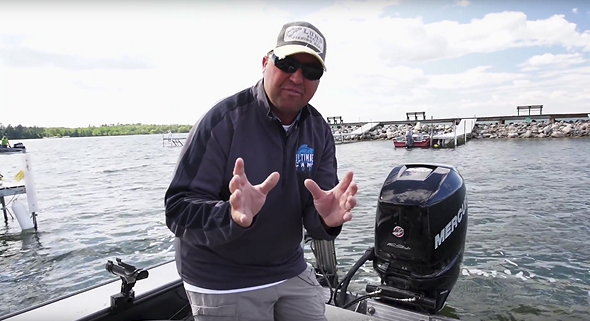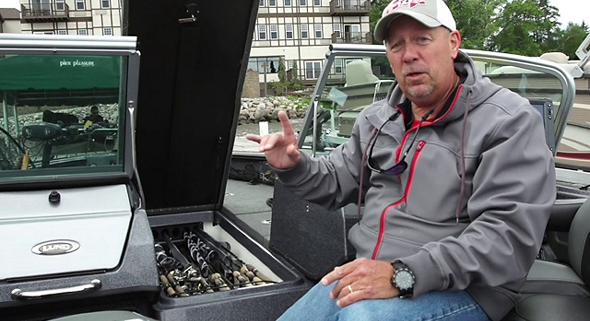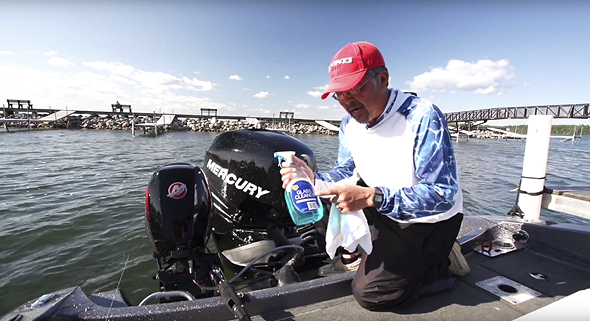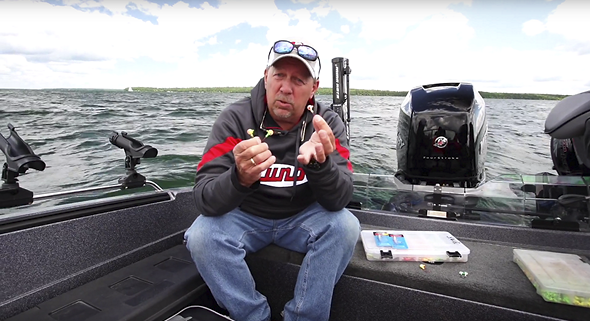
Tips for Cleaning and Maintaining Your Fishing Boat
From hull maintenance to engine care, we've got you covered with expert advice to make regular maintenance, cleaning and winterizing your boat a breeze.
A clean fishing boat not only looks great but also performs better and lasts longer. Regular cleaning is essential to prevent the buildup of dirt, grime, and potentially harmful substances like algae and salt. How often should you clean your fishing boat? The answer depends on several factors, including your boating habits, the environment you boat in, and the type of watercraft you own. Below are guidelines for how frequently you should be cleaning your fishing boat:
1. After Every Outing:
- Rinse your boat with fresh water after every fishing trip. This helps remove salt, dirt, and debris that can accumulate during your time on the water.
- Pay special attention to the hull, deck, and any exposed metal parts, like railings and cleats.
- Use a hose with a high-pressure nozzle to ensure a thorough rinse.
2. Weekly or Bi-weekly Cleaning:
- Depending on how often you use your boat, plan for a more detailed cleaning at least once a week or every two weeks.
- Use a mild boat soap or detergent to clean the deck, cockpit, and any interior surfaces.
- Scrub away any visible dirt, stains, or fish blood using a soft brush or sponge.
- Rinse thoroughly to remove all soap residue.
3. Monthly Maintenance:
- Once a month, dedicate some time to a deeper clean.
- Check for any signs of mildew or mold growth and address them promptly with a suitable marine cleaner.
- Inspect your fishing equipment, including rods, reels, and tackle boxes, and clean and organize them as needed.
4. Seasonal Overhaul:
- At the end of the boating season, or before winter storage, perform a comprehensive cleaning and maintenance routine.
- This should include a thorough cleaning of the hull, including removing any barnacles or marine growth.
- Check and clean all boat systems, from the engine to electronics and safety equipment.
- Lubricate moving parts, such as hinges and winches, to prevent rust and ensure smooth operation.
Additional Tips:
- Don't forget about your boat's trailer. Regularly clean and inspect it for signs of wear or corrosion.
- Upholstery and canvas covers should also be cleaned and protected to extend their lifespan.
- Invest in high-quality boat cleaning products and tools designed for marine use to achieve the best results.
Tips for Maintaining and Cleaning Specific Parts of Your Fishing Boat
Tip 1: Hull
- Scrape off any barnacles or crusted marine growth.
- Scrub hull thoroughly to remove marine growth and scum.
- Inspect the underwater gear and propellers for excessive wear or damage.
- Remove the hull drain plug.
Tip 2: Deck
- Wash the deck, superstructure and cockpit.
- Clean all deck hardware (i.e. cleats, rails, instruments, etc.) and apply a coat of metal polish or wax.
- Clean the indoor/outdoor carpet.
Tip 3: Engine
- IMPORTANT! Consult your engine manual for specific instructions covering winterization of the engine. Your dealer is qualified to perform engine winterization. Do not attempt to winterize the engine yourself without the proper knowledge and equipment.
Tip 4: Fuel System
- Fill the fuel tank completely, or empty completely. Either method will minimize condensation. You may want to add a gasoline stabilizer solution to the fuel if the tank is to remain full.
- Follow the product manufacturer’s recommended procedure.
Tip 5: Battery
- Remove battery, check water level, and store away from freezing temperatures.
- WARNING! To prevent personal injury, wear goggles, rubber gloves, and protective apron when working with the battery. Battery electrolyte can cause severe eye damage and burns to the skin. In case of spillage, wash area with a solution of baking soda and water.
Tip 6: Livewell
- Remove the drain plug or stand pipe from the drain in the livewell.
- It is important to remove the water remaining in the hoses and pumps. Use a compressed air hose on all fittings and drain holes to remove all remaining water.
Tip 7: Washdown Pumps
- Disconnect suction hose from water supply(fresh/sea water) or if water supply is taken from a tank, drain water storage tank.
- Open all spray nozzles/taps.
- Run the pump until all remaining water is expelled.
- Disconnect inlet and outlet tubes.
- Run the pump briefly to confirm that water has been expelled.
- Never start a frozen pump. Even if it is drained it may contain a small amount of water that could lock the rotor. Make sure fittings are securely connected when returned to service. See pumps Owners Manual for further instructions.
Tip 8: Interior Cleaning
- Scrub all interior surfaces.
- Be sure to remove everything that can hold moisture and cause mildew.
- Personal Flotation Devices (PFD’s) and other safety equipment must be cleaned and dried. If left on board, place them where air can circulate around them.
- Clean thoroughly and dry the bilge area. Remove all rags, sponges, or other cleaning materials from the bilge area.
- Allow the interior to completely air out for a few days.
- If you store your boat outside, we recommend that you do not store it with the canvas and bow set on. Cover with a storage cover(available from dealers), tarp, or plastic-especially if you live in an area of heavy snow. Whatever material you use for a cover, be sure the boat is properly ventilated.
- Upholstery and canvas covers should also be cleaned and protected to extend their lifespan.
- After cleaning, make sure everything is thoroughly dry and air can circulate freely throughout the inside of your boat.
Additional Tips:
- Don't forget about your boat's trailer. Regularly clean and inspect it for signs of wear or corrosion.
- Invest in high-quality boat cleaning products and tools designed for marine use to achieve the best results.
Remember that these tips can help you add life to your boat, and keep it looking like new.
Sign Up
For our monthly eNewsletter "The Catch"



